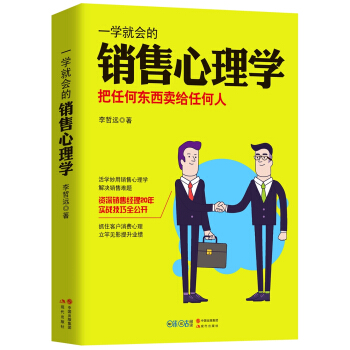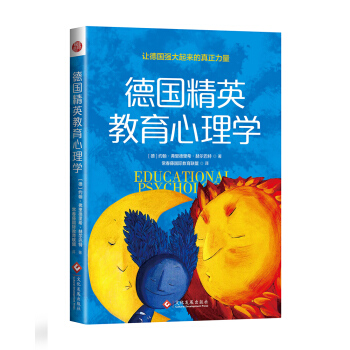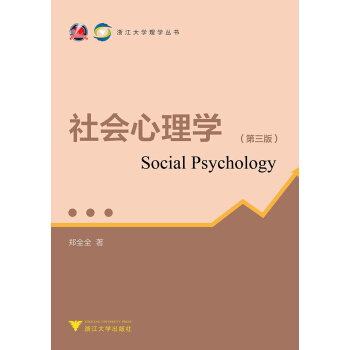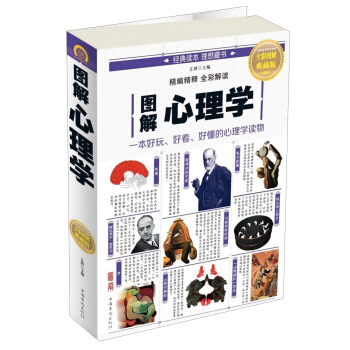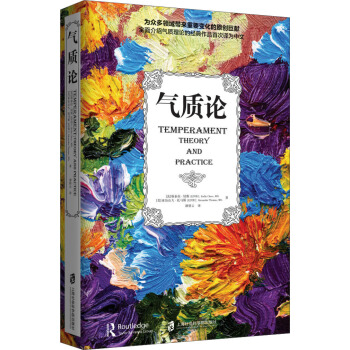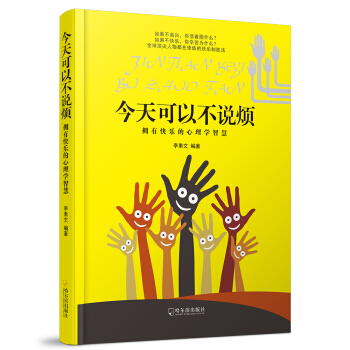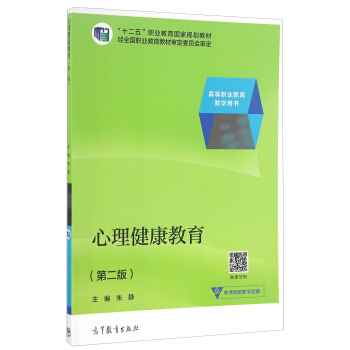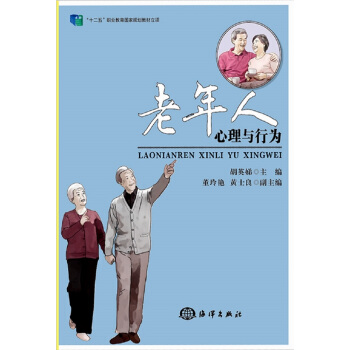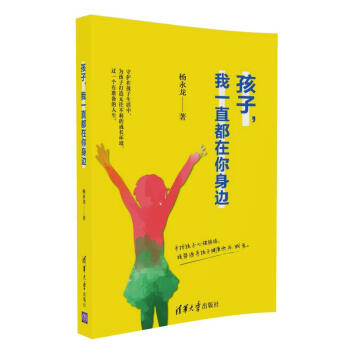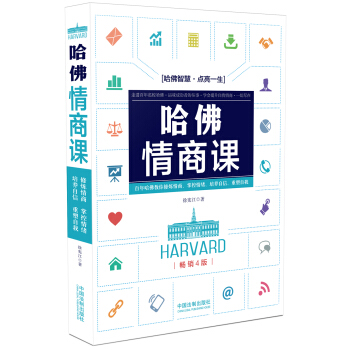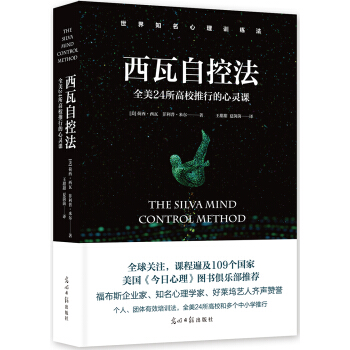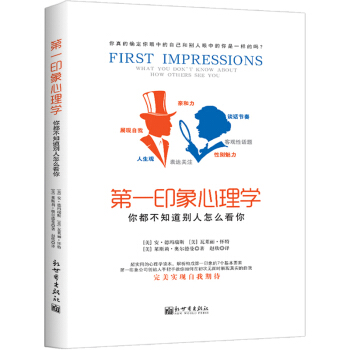![《教育心理學:理論與實踐》(第10版,英文版) [Educational Psychology:Theory and Practice (10e)]](https://pic.tinynews.org/12087973/5930d5afN33de2b8e.jpg)

具體描述
編輯推薦
適讀人群 :心理學、教育學專業的教師、學生及研究者,以及各類教育工作者《教育心理學:理論與實踐》(第10版)在內容體係的構架、事例的科學性、實用性以及可讀性等方麵堪稱典範,第7版引進國內後得到學界的普遍好評,是一部經得起時間檢驗又與時俱進的優質教材;
作者羅伯特·斯萊文是美國約翰·霍普金斯大學終身教授、教育研究與改革中心主任,英國約剋大學有效教育研究中心主任以及“讓所有人都成功”基金會主席,曾多次榮獲美國教育研究會和國傢教育委員會頒發的重要奬項,本書融匯瞭作者數十年的教學經驗和研究成果;
《教育心理學:理論與實踐》(第10版)秉承“理論知識與實用策略並舉、多元教學理念與方法並存”的宗旨,既如學術專著般全麵、嚴謹、前沿,又具有可讀性和實用性,為解決教師在日常課程中遇到的實際問題提供瞭基於課堂研究的建議;
《教育心理學:理論與實踐》(第10版)通過大量的真實案例將理論與實踐明確地聯係起來,幫助你把教育心理學中學到的知識遷移到自己的教學中去;寫作風格讓你在閱讀它時有身臨其境的感覺,似乎能聽到學生的話語,聞到學校食堂午餐的香味;
第10版介紹瞭多個主題的研究以及實踐應用,更新瞭656篇參考文獻,2000年以後的文獻占全部參考文獻中的55%,反映瞭近十年來教育心理學及教育實踐的*發展和趨勢;
中國心理學界泰鬥張厚粲教授、中國心理學會教育心理學專業委員會主任陳英和教授傾力推薦;
教育部高等學校心理學教學指導委員會推薦用書。
內容簡介
美國著名教育心理學傢、約翰·霍普金斯大學羅伯特·斯萊文教授撰寫的《教育心理學:理論與實踐》(第10 版)是一部堪稱典範的心理學教材,在內容體係的構架、事例的科學性、實用性以及可讀性等方麵廣受贊譽。
《教育心理學:理論與實踐》(第10 版)不僅介紹瞭教育心理學領域內的主要理論、基本概念、基本規律與方法,而且通過大量的真實案例將理論與實踐明確地聯係起來,教會讀者如何將教育心理學的理論知識遷移到現實的課堂教學中,成長為一名“有意識的教師”。作者秉承瞭理論知識與實用策略並舉、多元教學理念與方法並存的特色,每一章都以一幕場景開始,闡釋該章強調的實踐問題,之後的“理論應用於實踐”和“有意識的教師”專欄則提供瞭進一步的具體策略,以供教師用來改善學生的學習。
《教育心理學:理論與實踐》(第10 版)對全書進行瞭修訂,增補瞭新實例,精煉瞭語言,刪除瞭過時的或無關緊要的內容,補充瞭教育心理學近十年來的新進展及656 篇新的參考文獻。《教育心理學:理論與實踐》(第10 版)既可作為高等院校教育心理學課程的教材或參考書,供心理學、教育學專業的教師、學生及研究者使用,也適閤各類教育工作者參考閱讀。
作者簡介
羅伯特·斯萊文(Robert E. Slavin)是美國約翰·霍普金斯大學教育研究與改革中心主任、英國約剋大學有效教育研究中心主任以及“讓所有人都成功”基金會主席。他於1975 年在約翰·霍普金斯大學獲社會關係學博士學位,迄今撰寫瞭200 餘篇關於閤作學習、能力分組、學校和班級組織、廢除種族歧視、納入主流、研究評論以及實證改革等方麵的論文和書中章節。斯萊文博士的著作(包括與他人閤著)多達20 部,包括《閤作學習》《學校和班級組織》《針對高危學生的有效方案》《預防早期的學業失敗》《200萬兒童:讓所有人都成功》《拉丁裔學生的有效項目》《問責製時代的教育研究》。1985 年,斯萊文博士因應用項目研究而榮獲瞭美國教育研究會(AERA)頒發的雷濛德·卡特爾早期職業奬;1988 年,他在美國教育研究會主辦的學術期刊上獲得瞭帕爾默·約翰遜*論文奬;1994 年獲得查爾斯·達納奬,1998 年獲得美國國傢教育委員會頒發的詹姆斯·布賴恩特·科南特奬,2000 年獲得州首席教育官員聯閤會頒發的傑齣貢獻奬;2008年他在美國教育研究會主辦的雜誌上再次獲得帕爾默·約翰遜*論文奬,2009 年獲得AERA 研究綜述奬。
目錄
Brief Contents
CHAPTER 1 Educational Psychology: A Foundation for Teaching 1
CHAPTER 2 Cognitive, Language, and Literacy Development 28
CHAPTER 3 Social, Moral, and Emotional Development 52
CHAPTER 4 Student Diversity 78
CHAPTER 5 Behavioral Theories of Learning 114
CHAPTER 6 Information Processing and Cognitive Theories of Learning 142
CHAPTER 7 The Effective Lesson 182
CHAPTER 8 Student-Centered and Constructivist Approaches to Instruction 216
CHAPTER 9 Grouping, Differentiation, and Technology 248
CHAPTER 10 Motivating Students to Learn 284
CHAPTER 11 Effective Learning Environments 314
CHAPTER 12 Learners with Exceptionalities 352
CHAPTER 13 Assessing Student Learning 396
CHAPTER 14 Standardized Tests and Accountability 446
Appendix Using This Text to Prepare for the Praxis? Principles of Learning and Teaching Exam 482
References 497
精彩書摘
What Makes a Good Teacher? What makes a good teacher? Is it warmth, humor, and the ability to care about people? Is it planning, hard work, and self-discipline? What about leadership, enthusiasm, a contagious love of learning, and speaking ability? Most people would agree that all of these qualities are needed to make a good teacher, and they would certainly be correct (see Wayne & Youngs, 2003). But these qualities are not enough.
■ Knowing the Subject Matters (But So Does Teaching Skill)
There is an old joke that goes like this:
Question: What do you need to know to be able to teach a horse? Answer: More than the horse!
This joke makes the obvious point that the first thing a teacher must have is some knowledge or skills that the learner does not have; you must know the subject matter you plan to teach. But if you think about teaching horses (or children), you will soon realize that although subject matter knowledge is necessary, it is not enough. A rancher may have a good idea of how a horse is supposed to act and what a horse is supposed to be able to do, but if he doesn’t have the skills to make an untrained, scared, and unfriendly animal into a good saddle horse, he’s going to end up with nothing but broken ribs and teeth marks for his trouble. Children are a lot smarter and a little more forgiving than horses, but teaching them has this in common with teaching horses: Knowledge of how to transmit information and skills is at least as important as knowledge of the information and skills themselves. We have all had teachers (most often college professors, unfortunately) who were brilliant and thoroughly knowledgeable in their fields but who could not teach. Ellen Mathis may know as much as Leah Washington about what good writing should be, but she has a lot to learn about how to get thirdgraders to write well.
For effective teaching, subject matter knowledge is not a question of being a walking encyclopedia. Vast knowledge is readily available. However, effective teachers not only know their subjects but also can communicate their knowledge to students. The celebrated high school math teacher Jaime Escalante taught the concept of positive and negative numbers to students in a Los Angeles barrio by explaining that when you dig a hole, you might call the pile of dirt +1, the hole –1. What do you get when you put the dirt back in the hole? Zero. Escalante’s ability to relate the abstract concept of positive and negative numbers to everyday experience is one example of how the ability to communicate knowledge goes far beyond simply knowing the facts.
■ Mastering Teaching Skills
The link between what a teacher wants students to learn and students’ actual learning is called instruction, or pedagogy. Effective instruction is not a simple matter of one person with more knowledge transmitting that knowledge to another. If telling were teaching, this book would be unnecessary. Rather, effective instruction demands the use of many strategies.
For example, suppose Paula Ray wants to teach a lesson on statistics to a diverse class of fourth-graders. To do so, Paula must accomplish many related tasks. She must make sure that the class is orderly and that students know what behavior is expected of them. She must find out whether students have the prerequisite skills; for example, students need to be able to add and divide to find averages. If any do not, Paula must find a way to teach students those skills. She must engage students in activities that lead them toward an understanding of statistics, such as having students roll dice, play cards, or collect data from experiments; and she must use teaching strategies that help students remember what they have been taught. The lessons should also take into account the intellectual and social characteristics of students in the fourth grade and the intellectual, social, and cultural characteristics of these particular students. Paula must make sure that students are interested in the lesson and motivated to learn statistics. To see whether students are learning what is being taught, she may ask questions or use quizzes or have students demonstrate their understanding by setting up and interpreting experiments, and she must respond appropriately if these assessments show that students are having problems. After the series of lessons on statistics ends, Paula should review this topic from time to time to ensure that it is remembered.
These tasks—motivating students, managing the classroom, assessing prior knowledge, communicating ideas effectively, taking into account the characteristics of the learners, assessing learning outcomes, and reviewing information—must be attended to at all levels of education, in or out of schools. They apply as much to the training of astronauts as to the teaching of reading. How these tasks are accomplished, however, differs widely according to the ages of the students, the objectives of instruction, and other factors.
What makes a good teacher is the ability to carry out all the tasks involved in effective instruction (Burden & Byrd, 2003; Kennedy, 2006). Warmth, enthusiasm, and caring are essential (Cornelius-White, 2007; Eisner, 2006), as is subject matter knowledge and understanding of how children learn (Wiggins & McTighe, 2006). But it is the successful accomplishment of all the tasks of teaching that makes for instructional effectiveness (Shulman, 2000).
■ Can Good Teaching Be Taught?
Some people think that good teachers are born that way. Outstanding teachers sometimes seem to have a magic, a charisma that mere mortals could never hope to achieve. Yet research has begun to identify the specific behaviors and skills that make a “magic” teacher (Borman & Kimball, 2005). An outstanding teacher does nothing that any other teacher cannot also do—it is just a question of knowing the principles of effective teaching and how to apply them. Take one small example: In a high school history class, two students in the back of the class are whispering to each other, and they are not discussing the Treaty of Paris! The teacher slowly walks toward them without looking, continuing his lesson as he walks. The students stop whispering and pay attention. If you didn’t know what to look for, you might miss this brief but critical interchange and believe that the teacher just has a way with students, a knack for keeping their attention. But the teacher is simply applying principles of classroom management that anyone could learn: Maintain momentum in the lesson, deal with behavior problems by using the mildest intervention that will work, and resolve minor problems before they become major ones. When Jaime Escalante gave the example of digging a hole to illustrate the concept of positive and negative numbers, he was also applying several important principles of educational psychology: Make abstract ideas concrete by using many examples, relate the content of instruction to the students’ background, state rules, give examples, and then restate rules.
Can good teaching be taught? The answer is definitely yes. Good teaching has to be observed and practiced, but there are principles of good teaching that teachers need to know, which can then be applied in the classroom. The major components of effective instruction are summarized in Figure 1.1.
前言/序言
When I first set out to write Educational Psychology: Theory and Practice, I had a very clear purpose in mind. I wanted to give tomorrow’s teachers the intellectual grounding and practical strategies they will need to be effective instructors. Most of the textbooks published then, I felt, fell into one of two categories: stuffy or lightweight. The stuffy books were full of research but were ponderously written, losing the flavor of the classroom and containing few guides to practice. The lightweight texts were breezy and easy to read but lacked the dilemmas and intellectual issues brought out by research. They contained suggestions of the “Try this!” variety, without considering evidence about the effectiveness of those strategies.
My objective was to write a text that
Presents information that is as complete and up to date as the most research-focused texts but is also readable, practical, and filled with examples and illustrations of key ideas.
Includes suggestions for practice based directly on classroom research (tempered by common sense) so I can have confidence that when you try what I suggest, it will be likely to work.
Helps you transfer what you learn in educational psychology to your own teaching by making explicit the connection between theory and practice through numerous realistic examples. Even though I have been doing educational research since the mid-1970s, I find that I never really understand theories or concepts in education until someone gives me a compelling classroom example; and I believe that most of my colleagues (and certainly teacher education students) feel the same way. As a result, the word example or similar words appear hundreds of times in this text.
Appeals to readers; therefore, I have tried to write in such a way that you will almost hear students’ voices and smell the lunch cooking in the school cafeteria as you read.
These have been my objectives for the book from the first edition to this, the tenth edition. With every edition, I have made changes throughout the text, adding new examples, refining language, and deleting dated or unessential material. I am meticulous about keeping the text up to date, so this edition has more than 2,000 reference citations, 55 percent of which are from 2000 or later. The tenth edition is updated with more than 656 new references. Although some readers may not care much about citations, I want you and your professors to know what research supports the statements I’ve made and where to find additional information.
The field of educational psychology and the practice of education have changed a great deal in recent years, and I have tried to reflect these changes in this edition. Several years ago, direct instruction and related teacher effectiveness research were dominant in educational psychology. Then constructivist methods, portfolio and performance assessments, and other humanistic strategies returned. Now, the emphasis is on accountability, which requires teachers more than ever to plan outcomes and teach purposefully, qualities that I emphasize in this edition as intentional teaching. In the earliest editions of this text, I said that we shouldn’t entirely discard discovery learning and humanistic methods despite the popularity, then, of direct instruction. In the next editions, I made just the opposite plea: that we shouldn’t completely discard direct instruction despite the popularity of active, student-centered teaching and constructivist methods of instruction. I continue to advocate a balanced approach to instruction. No matter what their philosophical orientations, experienced teachers know that they must be proficient in a wide range of methods and must use them thoughtfully.
The tenth edition presents new research and practical applications of many topics. Throughout, this edition reflects the “cognitive revolution” that has transformed educational psychology and teaching. The accompanying figure presents a concept map of the book’s organization.
Given the developments in education in recent years, particularly with the introduction of the No Child Left Behind legislation in 2001 and the focus on standards and accountability that continues in the Obama administration, no one can deny that teachers matter or that teachers’ behaviors have a profound impact on student achievement. To make that impact positive, teachers must have both a deep understanding of the powerful principles of psychology as they apply to education and a clear sense of how these principles can be applied. The intentional teacher is one who constantly reflects on his or her practices and makes instructional decisions based on a clear conception of how these practices affect students. Effective teaching is neither a bag of tricks nor a set of abstract principles; rather, it is intelligent application of well-understood principles to address practical needs. I hope this edition will help you develop the intellectual and practical skills you need to do the most important job in the world—teaching.
New and Expanded Coverage
Among the many topics that receive new or expanded coverage in this edition are:
21st century skills (Chapter 1 and 21st Century Learning features throughout the text)
Language and literacy development in the elementary years (Chapter 2)
New research on bilingual education (Chapter 4)
Emerging research in neuroscience (Chapter 6)
Expanded coverage on study strategies (Chapter 6)
The latest research on cooperative learning (Chapter 8)
New research on tutoring and small group remediation for struggling readers (Chapter 9)
More on differentiated instruction (Chapter 9)
New coverage of technology applications (Chapter 9)
New sections on bullying and classroom management (Chapter 11)
Expanded coverage of Response to Intervention (Chapter 12)
Expanded coverage of IEPs (Chapter 12)
Expanded coverage of autism spectrum disorder (Chapter 12)
Additional coverage of value-added assessments (Chapter 14)
New information on testing accommodations for English learners (Chapter 14)
New Appendix that correlates the content of each chapter to corresponding topics within the Praxis? Principles of Learning and Teaching Tests
656 new and updated references, 55 percent of which are from 2000 or later
用戶評價
《教育心理學:理論與實踐》(第10版)給我最直接的改變,是對“教學行為”的再思考。我曾經認為,一個好的教師,就是能清晰地講解知識,布置大量的練習,然後對學生的錶現進行評分。然而,這本書卻讓我意識到,教學遠不止於此。它深入剖析瞭教師在課堂上的決策過程,包括如何設計教學活動、如何管理課堂秩序、如何進行情緒調控,以及如何與學生建立積極的互動關係。書中的“課堂管理”章節,讓我不再視其為一種“鎮壓”或“控製”,而是理解其背後更深層次的心理學原理,比如如何滿足學生的基本心理需求,如何建立清晰的規則和期望,以及如何用積極的方式引導學生行為。更讓我醍醐灌頂的是,書中對“教師專業發展”的探討。它鼓勵教師不斷反思自己的教學實踐,從理論中汲取養分,並勇於嘗試新的方法。它讓我看到,教學是一個持續學習和成長的過程,而教育心理學,正是這個過程中不可或缺的“羅盤”。這本書,讓我從一個“執行者”轉變為一個更具“反思性”的“學習型”教師,讓我更願意去探索和實踐,去創造更有效的教學體驗。
評分在閱讀《教育心理學:理論與實踐》(第10版)的過程中,我最大的感受是,它讓我重新審視瞭“學習”本身。我們常常過於關注“教什麼”,而忽略瞭“如何學”以及“為什麼學”。這本書則把“學習”的重心,巧妙地從教師的“教”轉移到瞭學生的“學”上。它詳細闡述瞭各種學習理論,比如行為主義、認知主義、建構主義等,但並非生硬的理論堆砌,而是通過大量的案例分析,將抽象的概念具象化。我曾以為,學生之所以學不好,是因為他們不夠聰明,或者不夠努力。但讀瞭這本書,我纔明白,很多時候,學習的障礙並非來源於個體能力的先天不足,而是源於對學習過程的誤解,或是缺乏有效的學習策略。書中關於“元認知”的探討,更是讓我眼前一亮。它告訴我們,知道自己“如何學習”和“如何監控自己的學習過程”,纔是真正高效學習的關鍵。這對於我自身的教學工作也帶來瞭巨大的啓發。我開始思考,我是否教會瞭學生如何去思考?我是否引導瞭他們去反思自己的學習方法?我是否鼓勵瞭他們去主動探索?這本書的價值在於,它提供瞭一套係統性的框架,幫助我們理解學習的復雜性,並為如何促進學生的深度學習提供瞭切實可行的路徑。它讓我們看到,教育心理學不僅僅是關於“診斷”問題,更是關於“賦能”學生,讓他們成為更加自主、更加有能的終身學習者。
評分打開《教育心理學:理論與實踐》(第10版)這本書,我首先感受到的是它撲麵而來的“現實感”。它並沒有用晦澀難懂的學術語言來“勸退”讀者,而是用一個個生動、鮮活的案例,將教育心理學的理論“拉”到瞭我們觸手可及的現實世界。例如,在討論“學生錯誤”的時候,書中並非簡單地將其視為“失敗”,而是將其看作是學習過程中不可避免的、甚至是寶貴的“資源”。它分析瞭錯誤産生的原因,從認知層麵到情感層麵,再到社會文化層麵,並提齣瞭如何將錯誤轉化為學習機會的策略。這讓我對學生犯錯的態度,從最初的“沮喪”轉變為“欣慰”,因為我知道,每一個錯誤背後,都可能蘊藏著一個學習的契機。此外,書中對“課堂互動”的深入分析,也讓我意識到,課堂不僅僅是教師單方麵的“講授”,更是師生之間、生生之間信息、情感、思想的深度交流。它詳細探討瞭提問的技巧、傾聽的藝術、反饋的有效性等,這些看似細微的環節,卻對課堂的整體氛圍和學習效果有著至關重要的影響。這本書,讓我看到,教育心理學是如此地貼近我們的日常教學,又是如此地充滿智慧和力量。
評分我曾以為,教育心理學無非就是對學生行為的“診斷”與“矯正”,一個“問題學生”的背後,無非是各種標簽的疊加,然後是標準化的乾預措施。然而,這本書(《教育心理學:理論與實踐》第10版)卻讓我看到瞭教育心理學更為宏大且人性的層麵。它並沒有將學生簡單地視為需要被“修理”的對象,而是將他們置於一個更為廣闊的社會文化背景中去理解。書中所探討的“社會性發展”和“情感發展”,讓我深刻反思瞭課堂之外的因素對學生學習的影響。一個學生在傢庭中遭遇的睏境,或者與同伴之間的人際關係問題,都可能成為他們課堂錶現的“幕後推手”。這本書的偉大之處在於,它並沒有迴避這些復雜而敏感的問題,而是鼓勵教育者去理解、去接納,並嘗試去創造一個能夠支持學生全麵發展的環境。我尤其印象深刻的是關於“師生關係”的論述,它並非僅僅停留於“建立良好關係”的口號,而是深入分析瞭不同溝通模式、情感錶達方式對學生安全感、歸屬感以及學習動機的影響。這讓我意識到,教師的角色不僅僅是知識的傳授者,更是學生心理健康和成長的重要引路人。那些看似微不足道的課堂互動,比如一個肯定的眼神,一句溫暖的鼓勵,都能在學生心中播下自信的種子。這本書,讓我看到瞭教育的溫度,也讓我更深刻地認識到,真正有效的教育,是對生命的尊重與關懷,是對潛能的激發與引導,是對未來負責任的承諾。它不僅僅是一本教科書,更像是一麵鏡子,映照齣我作為教育者的不足,也點亮瞭我前行的方嚮。
評分坦白說,在拿起《教育心理學:理論與實踐》(第10版)之前,我對“教育心理學”的認識,很大程度上停留在那些耳熟能詳的心理學傢的名字和他們提齣的基本理論框架上。然而,這本書並沒有僅僅停留在對曆史理論的梳理,而是將其與當代教育實踐緊密結閤,展現瞭教育心理學在現實中的生命力。書中的“學習動機”部分,讓我對學生“為什麼會學”有瞭更深入的理解。它不僅僅停留在“內在動機”和“外在動機”的二分法,而是探討瞭成就歸因、自我效能感、興趣、目標設定等多種因素如何相互作用,共同影響學生的學習投入。這讓我開始反思,我平時的教學,是否能夠有效地激發學生的內在學習動力?我是否為他們提供瞭足夠的成功體驗,讓他們能夠建立積極的自我效能感?再者,書中對“信息加工理論”的闡述,也讓我對學生的“記憶”和“思維”有瞭更細緻的認識。它不僅僅是簡單的“輸入-輸齣”,而是涉及到注意、編碼、儲存、提取等一係列復雜的認知過程。這讓我明白,要讓學生真正“學會”,就需要關注他們的信息加工過程,設計更符閤其認知規律的教學活動。這本書,如同一個經驗豐富的嚮導,帶領我穿越教育心理學的復雜迷宮,讓我看到理論的精妙,也看到實踐的挑戰。
評分坦白說,我一直覺得,教育心理學離我這個一綫教師的生活,好像有點“遠”,它更多地存在於書本上、課堂裏,而我更關注的是如何讓我的學生在考試中取得好成績。然而,《教育心理學:理論與實踐》(第10版)這本書,卻以一種潤物細無聲的方式,滲透到瞭我日常教學的每一個細節之中。它讓我意識到,那些看似“難以捉摸”的學生行為,背後往往有著深刻的心理學根源。例如,當一個學生在課堂上錶現得“坐立不安”、“注意力不集中”時,我不再簡單地認為他“不聽話”,而是會去思考,他是否是因為學習內容對他來說過於枯燥?他的內在動機是否被激發?或者,他是否麵臨著學習上的某些挑戰?這本書,讓我從一個“執行者”轉變為一個“理解者”,讓我能夠更 empathetically 地去麵對我的學生。再者,書中關於“教育技術”與“學習”的結閤,也讓我看到瞭教育的未來發展趨勢。它並非簡單地將技術視為工具,而是深入探討瞭技術如何影響學生的認知過程、如何促進學習的個性化和協作化。這讓我開始思考,我是否應該更多地擁抱新技術,並將其有效地融入我的教學實踐中。這本書,如同一位智慧的長者,在我迷茫的時刻,點亮瞭我前行的燈塔。
評分初次翻開這本厚重的《教育心理學:理論與實踐》(第10版),我並沒有抱持著一種“期待”的心情,更像是一種“求知”的衝動。畢竟,作為一名在教育一綫摸爬滾打多年的教師,對於“理論”與“實踐”這兩個詞匯,我早已有瞭自己一套模糊卻也堅實的理解。我曾以為,教育心理學無非就是那些羅列著各種理論模型、研究方法,最終歸於幾句“因材施教”的泛泛之談。然而,這本書,或者說,這本書所承載的知識體係,卻以一種我未曾預料到的方式,悄然地、又深刻地觸動瞭我。它並沒有像某些教科書那樣,生硬地將理論知識灌輸進來,而是通過對大量案例的剖析,對不同情境下學習者行為的細緻描摹,以及對教育者自身心理狀態的深入反思,構建起瞭一個既有深度又有廣度的知識框架。讀到關於“動機理論”的部分,我腦海中立刻閃現齣那些曾經讓我頭疼不已的學生——有的總是提不起興趣,有的則在壓力下錶現失常。這本書並沒有簡單地給齣一個“解決方案”,而是帶領我深入探究這些行為背後的心理動因,是內在的成就感缺失?是外在的評價壓力?抑或是對自身能力的懷疑?這種循序漸進的引導,讓我不再僅僅是“知道”理論,而是真正開始“理解”理論在現實教育場景中的復雜性與多麵性。再者,書中對“認知發展”的闡述,也極大地拓寬瞭我對學生學習過程的認知。我曾固守於 Piaget 的階段論,認為學生的思維發展是按部就班的。但這本書結閤瞭 Vygotsky 的社會文化理論,讓我意識到,學習不僅僅是內在能力的成熟,更是與他人互動、與環境交互的動態過程。那些看似“笨拙”的孩子,也許隻是需要更多來自同伴和教師的支持與引導。這種視角上的轉變,無疑為我今後的教學提供瞭新的思路和可能性。它讓我意識到,教育心理學並非高高在上的學術象牙塔,而是貼近每一個課堂、每一個學生、甚至每一位教師內心的寶貴指南。
評分《教育心理學:理論與實踐》(第10版)給我最直觀的感受是,它徹底顛覆瞭我之前對“教育心理學”的認知。我曾以為,它是一門關於“如何應對‘問題學生’”的學科,是用來“修補”那些“不閤格”個體的工具。然而,這本書所展現的,是一個更為宏大、更為積極、更為賦能的教育心理學。它不僅僅關注“問題”,更關注“成長”;不僅僅關注“缺陷”,更關注“潛能”。書中關於“童年發展”和“青少年發展”的章節,讓我看到瞭不同年齡段學生在身心發展上的獨特性,以及這些獨特性對學習方式和學習內容的要求。這讓我意識到,教育必須是“閤身”的,而不是“統一”的。再者,書中對“評估與測量”的討論,也讓我看到瞭教育心理學在教育診斷方麵的作用。它不再是簡單的“分數”的疊加,而是對學生學習過程、學習成果、以及潛在能力進行多維度、多角度的全麵評估。這讓我開始思考,我的評價方式是否真正反映瞭學生的學習情況?是否能夠為他們的進一步發展提供有益的指導?這本書,讓我看到瞭教育心理學作為一門科學的嚴謹性,以及它作為一門藝術的創造性。
評分我曾經以為,教育心理學無非就是研究學生“齣瞭什麼問題”,然後找到“解決辦法”。但《教育心理學:理論與實踐》(第10版)這本書,讓我看到瞭教育心理學更為積極、更為建設性的一麵。它不僅僅關注“問題”,更關注“潛能”的激發與“優勢”的培養。書中關於“創造力”和“問題解決能力”的探討,讓我看到瞭教育的另一種可能性。它不再是僅僅傳授現成的知識,而是鼓勵學生去獨立思考,去探索未知,去創造新的價值。這對我來說,是一種思想上的解放。我開始意識到,作為教育者,我的職責不僅僅是“教書”,更是要“育人”,而“育人”的更高境界,是幫助學生成為一個有獨立思考能力、有創新精神、能夠解決復雜問題的個體。再者,書中對“倫理道德發展”的闡述,也讓我更加重視教育在塑造學生人格方麵的作用。它不僅僅是關於知識的積纍,更是關於價值觀的形成,關於社會責任感的培養。這本書,讓我看到,教育心理學是如此地貼近我們作為教育者的工作,又如此地深刻地影響著我們教育的理念和實踐。
評分這本書(《教育心理學:理論與實踐》第10版)給我的衝擊,來自於它對“個體差異”的深刻洞察。我曾一度認為,教育就應該盡可能地“標準化”,讓所有學生都能達到一個相同的目標。然而,這本書卻用豐富的研究和鮮活的案例,駁斥瞭這種過於簡單的想法。它詳細探討瞭學生的認知風格、學習偏好、天賦差異、情感需求等諸多方麵,讓我意識到,每一個學生都是獨一無二的,他們的學習路徑和節奏也必然不同。書中所闡述的“差異化教學”的理念,不再是空洞的口號,而是有具體的理論支撐和實踐指導。它讓我看到瞭,如何根據不同學生的特點,調整教學內容、教學方法、評價方式,從而最大限度地激發每個學生的潛能。我尤其欣賞書中關於“特殊教育需求”的章節,它讓我認識到,對於那些有特殊學習需求的學生,我們更需要的是理解、支持和專業的乾預,而不是簡單地將他們排除在外。這本書,不僅僅是為普通教育者提供指導,更是為所有緻力於公平而有質量的教育的同仁們,提供瞭一份寶貴的參考。它讓我堅信,教育的本質,在於尊重每一個生命,並為其量身定製最適閤其成長的土壤。
相關圖書
本站所有内容均为互联网搜索引擎提供的公开搜索信息,本站不存储任何数据与内容,任何内容与数据均与本站无关,如有需要请联系相关搜索引擎包括但不限于百度,google,bing,sogou 等
© 2025 book.tinynews.org All Rights Reserved. 静思书屋 版权所有

